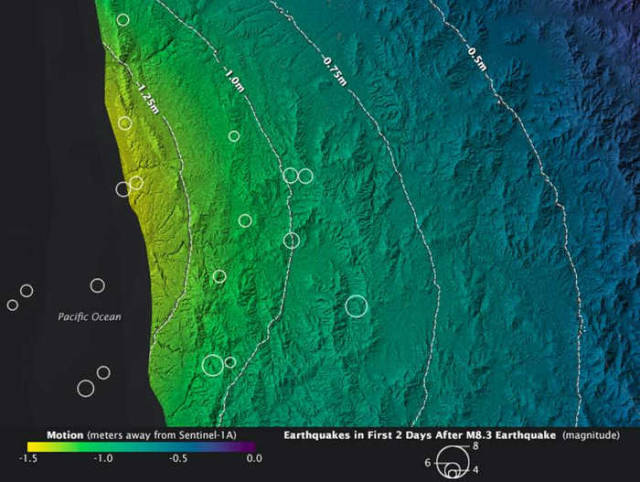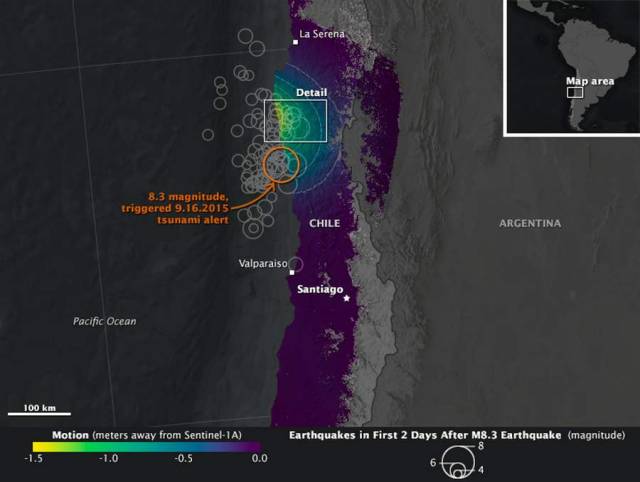Chile sitting along the southeast edge of the Pacific “Ring of Fire,” is used to earthquakes and tsunamis. The strongest quake on record was recorded in 1960, and at least three “great” quakes have hit the country since 2000.
The most recent, the Illapel earthquake, occurred on September 16, 2015, when a magnitude 8.3 quake struck near the coast of central Chile along the boundary of the Nazca and South American tectonic plates.
The shaking lasted at least three minutes and propelled a 4.5-meter (15-foot) tsunami wave that washed into Coquimbo and other coastal areas. Smaller tsunami waves raced across the Pacific and showed up on the shores of Hawaii and other islands. The earthquake and tsunami caused substantial damage in several Chilean coastal towns, and at least 13 deaths have been reported. Still, demanding building codes and extensive disaster preparedness meant the loss of life and property was much less than in other, smaller earthquakes around the world (such as Nepal or Haiti).
The maps show how the Earth moved in mid-September, as observed by the Copernicus Sentinel-1A satellite (operated by the European Space Agency) and reported by ground stations to the U.S. Geological Survey. Sentinel-1A carries a synthetic aperture radar (SAR) instrument, which beams radio signals toward the ground and measures the reflections to determine the distance between the ground and the satellite. By comparing measurements made on August 24 and September 17, Cunren Liang, Eric Fielding, and other researchers from NASA’s Jet Propulsion Laboratory were able to determine how the land surface shifted during and after the earthquake.
Fielding, said:
“The 2015 earthquake ruptured along almost the same part of the subduction zone as an earlier event in 1943 that was close to the same size. This means that it took only 70 years for enough stress to build up in the Chile subduction zone to produce a M8.3 earthquake on each section of the zone that runs the full length of Chile.”
NASA Earth Observatory maps by Joshua Stevens, using interferogram data courtesy of Copernicus and Eric Fielding NASA/JPL, and earthquake data from the U.S. Geological Survey. Caption by Mike Carlowicz.
source earthobservatory







Leave A Comment